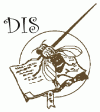



Bryant, S.H. 1999. Salivary preparations from D. pseudoobscura.
Dros. Inf. Serv. 82: 137. View PDF
Pye, Q. 1999. New white-eyed Drosophila “unknown” stocks for genetics laboratory courses.
Dros. Inf. Serv. 82: 137. View PDF
Wright, C.P. 1999. A method for transferring etherized flies into a container of active flies.
Dros. Inf. Serv. 137-138. View PDF
I have found that the use of D. pseudoobscura rather than D. melanogaster is much easier for salivary preparations. The larvae are much larger, and so are the salivary glands. Students also have a much easier time extracting the glands from D. pseudoobscura than they do from D. melanogaster. While not as many interesting chromosome aberrations are available in D. pseudoobscura, one excellent balanced lethal stock is available which has a very nice single inversion loop in chromosome 2. This stock is )/Ba: Delta/BareInv.
In his teaching note MacIntyre (DIS 51:158) discussed the utility of some phenotypically identical (orange eye, dark body, and incomplete wing veins) but genotypically unique Drosophila “unknown” stocks for genetics laboratory courses. I have constructed a set of “unknown” stocks that are comparable to his, except that they all have white eyes. White eyes are due to three different situations, (1) the interaction of bw, bwD, or wBwx with cn, st or v, (2) the epistatic interaction of w with ca, bw, st, bwD or v, or (3) the allele w. Another difference between the orange and white-eyed stocks is that some of the white unknowns contain two wing vein mutations (e.g. shf2; ve or ve ri) that interact to produce the wing phenotype.
In working with fruit flies, it is sometimes necessary to transfer etherized flies into a container of flies which are awake and active. It is usually best to make such a transfer without etherizing or disturbing the active flies in the container. One method which is useful in this situation involves the use of a Pasteur pipette. An etherized fly can be gently brushed or sucked head-first into the small end of a Pasteur pipette. The Pasteur pipette containing the etherized fly can then be carefully inserted along the side of the stopper or cover of the container of active flies. This can be done in such a way that the active flies in the container do not escape and are not disturbed. After the end of the Pasteur pipette which contains the etherized fly has entered the chamber of the fly container, gentle air pressure can be applied with the pipette bulb or by mouth. The etherized fly will be forced out of the pipette into the fly container. The etherized fly should be deposited on a dry surface such as the side of the container and allowed to remain on the dry surface until it wakes up and becomes active. I have found this to be a useful technique in the situation of introductory genetics labs where beginning genetics students sometimes have difficulty in handling flies. If students try to etherize all the active flies in a container in order to introduce a few etherized flies of another genotype, sometimes all the flies will be killed as a result of accidental over-etherization. This can cause problems, especially in the situation where the active flies are virgin females which might be difficult to replace if they are killed. The use of the method of transfer decreases the amount of ether to which the flies are exposed, and thus increases their chance for survival.